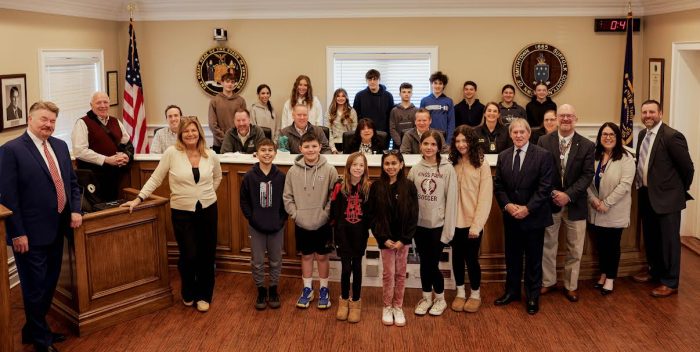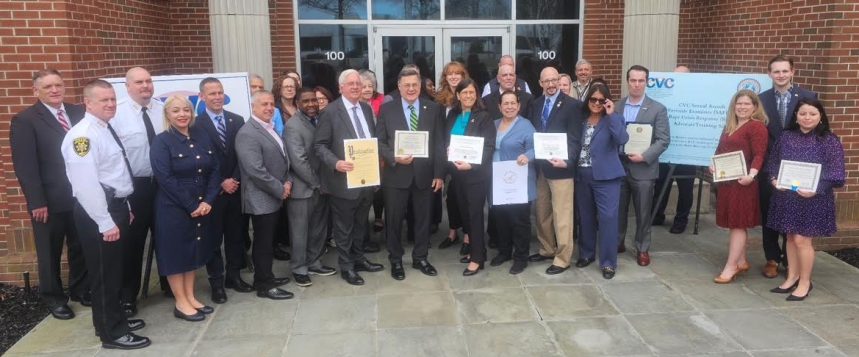On April 2nd, student leaders from RJO Intermediate School, in the Kings Park Central School District’s Superintendent’s Council visited Smithtown Town Hall for a unique, behind-the-scenes look at how local government serves the community.
Accompanied by Superintendent Dr. Timothy Eagan and Assistant Superintendent Dr. Ralph Cartisano, the students were welcomed by Town of Smithtown Supervisor Ed Wehrheim and representatives from several Town departments for a special presentation on the inner workings of municipal government.
The Superintendent’s Council is composed of student leaders in grades 4 through 12 from R.J.O. Intermediate School, William T. Rogers Middle School, and Kings Park High School. Throughout the school year, the council meets monthly to explore leadership, service, and civic engagement. This year, the students focused on gaining a deeper understanding of local government functions and community service.

“It was an absolute pleasure to welcome such a fantastic group of students from Kings Park to Town Hall. Their enthusiasm, curiosity, and thoughtful questions truly impressed all of us. This is a remarkable group of young leaders, and it was inspiring to see their genuine interest in how local government works and serves the community. I want to sincerely thank Superintendent Dr. Timothy Eagan and Assistant Superintendent Dr. Ralph Cartisano for encouraging these future leaders to engage in public service and civic education. We’re proud to support programs like this that help shape tomorrow’s community leaders,” said Supervisor Wehrheim.
The students participated in presentations from five Town of Smithtown departments, each offering a detailed look at the services they provide and their impact on the community. Presenters included: Simone Freeman, Assistant Town Attorney; David Barnes, Director, Department of Environment and Waterways (DEW); Peter Hans, Director, Planning and Engineering; Liam Trotta, Environmental Planner; Bill White, Director, Building Department; Leigh Wixson, Director, Smithtown Animal Shelter; and Denise Vibal, Animal Control Officer.
Each speaker offered valuable insight into their department’s role and responsibilities, shared advice for students interested in public service careers, and discussed academic pathways, internships, and volunteer opportunities within the Town.

“Our instructional theme this year in Kings Park is, ‘Learning and Preparing for My Future.’ I was both delighted and thankful that our student-leaders had the opportunity to learn about the functions of various town departments and future employment and/or volunteer opportunities. It is my hope that Kings Park’s best and brightest youth remain informed and committed to our town’s future. A special thank you to Supervisor Wehrheim and his staff for making this special event happen!” said Dr. Tim Eagan, Superintendent, Kings Park Central School District
Students who participated are members of the Superintendent’s Council, a group of student leaders in grades 4-12 who meet monthly over the school year. Every fall, two students are nominated to join the council by their peers in 4th grade, and they continue their participation through graduation. The students provide essential insight and a perspective on a wide range of topics. This year, the group focused on learning about local government, specifically the various town departments and their functions. In preparation for their visit to Town Hall, the students performed some internet research on specific departments and then shared what they found with the rest of the group.
The Town of Smithtown looks forward to continuing its partnership with the Kings Park Central School District and encourages students to remain active participants in their community’s future.






















